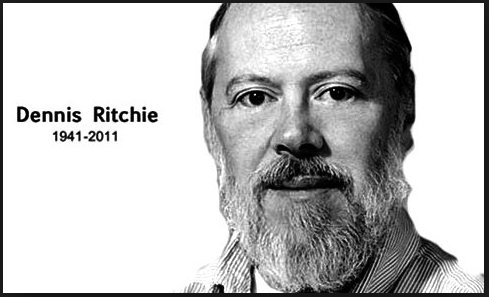Home » C Programming » Tutorial »
History of C Programming Language
The C Programming language was developed in 1970s by Dennis M. Ritchie at Bell Labs { AT & T }. In the 1960s Dennis worked with others employees of Bell Laps, on a project known as Multics. The Goal of the "Multics" project was to developed an operating system that could be used by thousands users. In 1969s AT&T withdrew the project, because the project couldn't produce an economically useful system.Ken Thompson began to work on the development of a new file system. He wrote, a version of the new file system for the DEC PDP-7, in assembler. This new file system was also used for the game Space Travel. Soon they began to make improvements and add expansions. [They used there knowledge from the Multics project to add improvements]. After a while a complete system was born. Brian W. Kernighan called the system "UNIX", a sarcastic reference to Multics. The whole system was still written in assembly code.
Besides assembler and Fortran, UNIX also had an interpreter for the programming language B. [ The B language is derived directly from Martin Richards BCPL ]. The language B was developed in 1969-70 by Ken Thompson. In the early days computer code was written in assembly code. To perform a specific task, you had to write many pages of code. A high-level language like B made it possible to write the same task in just a few lines of code. The language B was used for further development of the UNIX system. Because of the high-level of the B language, code could be produced much faster, then in assembly.
A drawback of the B language was that it did not know data-types. {Everything was expressed in machine words}. Another functionality that the B language did not provide was the use of “structures”. The lag of these things formed the reason for Dennis M. Ritchie to develop the programming language C. So in 1971-73 Dennis M. Ritchie turned the B language into the C language, keeping most of the language B syntax while adding data-types and many other changes. The C language had a powerful mix of high-level functionality and the detailed features required to program an operating system. Therefore many of the UNIX components were eventually rewritten in C {the Unix kernel itself was rewritten in 1973 on a DEC PDP-11}.
The programming language C was written down, by Kernighan and Ritchie, in a now classic book called “The C Programming Language, 1st edition”. {Kernighan has said that he had no part in the design of the C language: “It’s entirely Dennis Ritchie’s work”. But he is the author of the famous “Hello, World” program and many other UNIX programs}.
For years the book “The C Programming Language, 1st edition” was the standard on the language C. In 1983 a committee was formed by the American National Standards Institute {ANSI} to develop a modern definition for the programming language C {ANSI X3J11}. In 1988 they delivered the final standard definition ANSI C. {The standard was based on the book from K&R 1st ed.}.
The standard ANSI C made little changes on the original design of the C language. {They had to make sure that old programs still worked with the new standard}. Later on, the ANSI C standard was adopted by the International Standards Organization {ISO}. The correct term should there fore be ISO C, but everybody still calls it ANSI C.
C Language Founder Denish Ritchie

C Tutorial
- History of C Language
- The First Program in C
- Compilation & Execution
- Compile C on Dev-C++
- Compile C on GCC Linux
- Variable & Data types
- Comments
- Storage Classes
- Conidtional Statements
- Switch Cases
- Loops (for, while, do-while)
- Arrays
- Pointers
- Function Pointer
- Strings & Library func
- Formated I/O
- Structure
- Enum
- Union
- File I/O
- Memory Management
- Error Handling
- Type Casting
